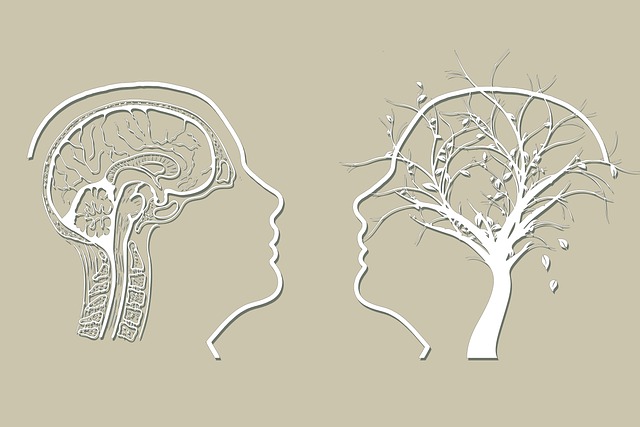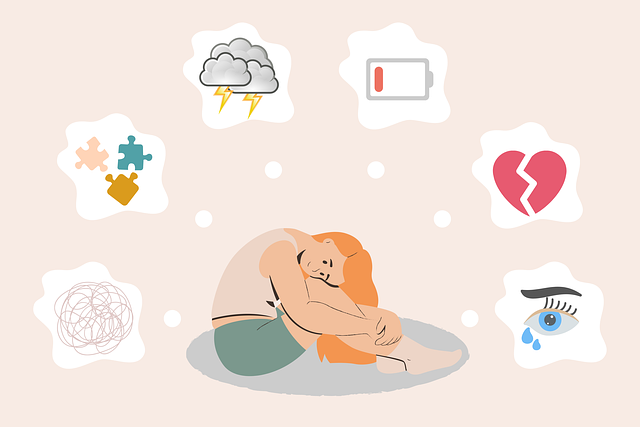Risk assessment in pediatric palliative care, focusing on therapy for children with terminal illnesses, involves a holistic review of medical history, current health status, and anticipated challenges, including physical, emotional, and social factors. By integrating trauma support services, mental health awareness, mindfulness meditation, self-care routines, and culturally sensitive practices, healthcare providers can proactively address psychological stressors, enhance resilience, and promote optimal comfort and quality of life. This comprehensive approach ensures tailored interventions to meet each child's unique needs, supporting both their physical and emotional well-being during a challenging period. Continuous monitoring and adaptive risk management are crucial for addressing the dynamic needs of the child, family, and caregivers, with the goal of fostering adaptability and promoting long-term mental health.
In pediatric palliative care, risk assessment and harm minimization planning are indispensable tools for ensuring safe and compassionate therapy delivery. This comprehensive guide delves into the essential components of effective risk management, from understanding complex pediatric risk assessment to developing robust strategies for minimizing potential harms. We explore best practices for implementing safety protocols, continuous monitoring, and adaptive risk adjustments tailored to children with terminal illnesses. By embracing these principles, healthcare providers can optimize therapeutic outcomes while prioritizing patient well-being.
- Understanding Risk Assessment in Pediatric Palliative Care
- Identifying Potential Harms and Their Sources
- Developing a Comprehensive Minimization Plan
- Implementing Strategies for Safe Therapy Delivery
- Continuous Monitoring and Adaptive Risk Management
Understanding Risk Assessment in Pediatric Palliative Care

Risk assessment is a critical component of pediatric palliative care, focusing on identifying and evaluating potential risks associated with a child’s condition and surrounding environment to prevent harm. In the context of therapy for children with terminal illnesses, this process involves a comprehensive review of medical history, current health status, and anticipated challenges. It goes beyond merely identifying dangers; it entails analyzing factors that might impact the child’s overall well-being, including physical, emotional, and social aspects. This holistic approach ensures that tailored interventions are implemented to minimize risks and promote optimal comfort and quality of life for the pediatric patient.
By integrating trauma support services and mental health awareness into risk assessment protocols, care providers can proactively address potential psychological and emotional stressors. Emotional well-being promotion techniques, when incorporated early, can significantly enhance the child’s resilience and coping mechanisms, thereby reducing the adverse effects of facing a terminal illness. This proactive approach not only supports the physical aspects of palliative care but also ensures that the child’s overall developmental and social needs are met during this challenging period.
Identifying Potential Harms and Their Sources

Identifying potential harms is a critical step in risk assessment for therapy provided to children with terminal illnesses. These harms can stem from various sources, including medical complications related to the illness itself, psychological effects of coping with such a serious diagnosis, and the impact of treatment options on their quality of life. For instance, pediatric patients might experience significant anxiety or distress when facing diagnostic procedures or aggressive therapies. Additionally, side effects from medications used in palliative care can contribute to physical discomfort and hinder their overall well-being.
Mindfulness meditation and self-care routine development for better mental health are strategies that can help mitigate these harms. By incorporating stress reduction methods, such as mindfulness techniques, into their daily lives, children can learn to manage anxiety and improve their emotional resilience. These practices also foster a sense of control and autonomy, which is crucial for enhancing their overall quality of life.
Developing a Comprehensive Minimization Plan

Developing a comprehensive harm minimization plan is an essential step in ensuring the well-being and support of children facing terminal illnesses and their families. This involves a multifaceted approach that goes beyond mere treatment. The plan should incorporate strategies to prevent burnout among healthcare providers, who play a crucial role in delivering compassionate care. By integrating self-awareness exercises into the routine, medical professionals can maintain resilience, enhancing their ability to support both the child and their loved ones through this challenging time.
Moreover, the minimization strategy must address mental illness stigma reduction efforts. Creating an environment where families feel safe to discuss their experiences without fear of judgment fosters open communication, enabling better access to emotional support services. This holistic approach ensures that therapy for children with terminal illnesses is not just physically comprehensive but also mentally and emotionally supportive, ultimately enhancing the quality of care provided.
Implementing Strategies for Safe Therapy Delivery

Implementing strategies for safe therapy delivery is paramount when providing care for children facing terminal illness. This involves a multifaceted approach to ensure the well-being and resilience of both the child and their family. One key strategy is incorporating resilience building techniques into the therapeutic process, empowering children to cope with challenges and maintain hope amidst adversity. Culturally sensitive practices are equally vital; understanding and respecting the family’s cultural background enables therapists to tailor interventions that align with their values and beliefs, fostering trust and engagement.
Additionally, supporting self-care routine development for both the child and caregivers is essential. Encouraging healthy habits and providing coping mechanisms helps manage stress levels and promotes better mental health for everyone involved. These strategies collectively contribute to a more nurturing environment, where therapy becomes a source of comfort, guidance, and strength during this difficult journey.
Continuous Monitoring and Adaptive Risk Management

In the context of therapy for children with terminal illnesses, continuous monitoring and adaptive risk management are essential components of comprehensive care. This involves a dynamic process where healthcare professionals regularly assess the evolving needs and well-being of the child, family, and caregivers. By staying vigilant and responsive, interventions can be swiftly adjusted to mitigate emerging risks and promote resilience building. The goal is to create an environment that fosters adaptability and enhances mental health policy analysis and advocacy, ensuring the best possible quality of life for all involved.
Adaptive risk management requires a multi-faceted approach, incorporating mindfulness meditation as a tool to support emotional regulation and coping mechanisms. This proactive strategy not only aids in stress reduction but also strengthens the child’s and family’s ability to navigate challenges. Such practices contribute to a holistic understanding of the individual’s mental health landscape, enabling personalized interventions that go beyond addressing immediate risks to foster long-term well-being.
Risk assessment and harm minimization planning are essential components of providing safe and effective therapy for children with terminal illnesses. By understanding risk assessment, identifying potential harms, developing comprehensive minimization plans, implementing strategies for safe therapy delivery, and continuously monitoring adaptive risk management, pediatric palliative care teams can ensure the best possible outcomes for their young patients. These practices not only protect children but also empower families and caregivers to navigate this challenging journey with confidence and peace of mind.














